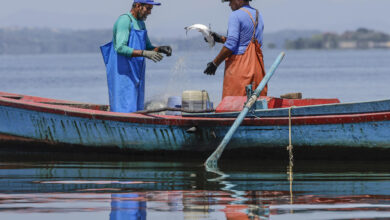Is plastic coming to an end? Some possible substitutes
The environmental policy against plastic is causing a change in social consciousness.

We tell you what are the possible options to replace the use of plastics. / Photo: Pexels
LatinAmerican Post | Ariel Cipolla
Listen to this article
Leer en español: ¿El plástico está llegando a su fin? Algunos posibles sustitutos
Little by little, the world seems to care more about the environment. This is especially evident with some materials, such as plastic. For example, recently the Cambio 16 website reported that Amazon decided to ban the sale of single-use plastic products on its platform, in order to improve the care of the planet.
Specifically, in Latin America, we see that, for example, the Nueva Rioja website commented that in that Argentine province the marketing and sale of plastic bags in supermarkets will be prohibited, a decision taken by the Health, Ecology and Environment commission in order to preserve the planet.
For Xataka, "the reign of plastic is coming to an end." Knowing that, little by little, we are stopping the consumption of this material, it is worth asking ourselves what the options may be to generate a much more environmentally friendly replacement. Let's look at them.
Possible substitutes for plastic
Plastics are still part of our day to day. However, no one says that this cannot change. For example, for the Washington Post it is time to "get plastic out of our lives", since many tons of waste are generated per day, with only a small percentage that can be recycled.
Knowing that several government entities are taking measures to end the use of this material, which has taken over different activities of our daily lives (such as shopping in supermarkets, for example), it is convenient to think of some possible substitutes.
In this sense, the first option is that of bioplastics. The specialized Sustainability website mentions that they are biodegradable and come from renewable sources, thus reducing the problem of waste. Basically, they consist of obtaining natural polymers from agricultural residues, such as cellulose or corn starch.
National Geographic complements this information by saying that they would be an excellent alternative to reduce the more than 8,000 million tons of plastic produced to date. In this way, by relying on bioplastics, we will reduce the impact on the carbon footprint.
The second alternative is biodegradable plastics. In La Nación they comment that biodegradability implies that its components can be eaten by living organisms, such as fungi and bacteria. In this way, problems derived from plastic can be solved.
Also read: Are electric cars really green?
The problem would be that biodegradable plastics can not replace everything. Basically, biodegradable plastics are not recycled like other plastics, since most require a special process to break down. For that, a network for the treatment of household organic waste would be needed, which would imply an investment from each government.
Finally, there are several investigations to try to generate plastic of animal origin. One of them, according to Mundo Agropecuario, would consist of converting discarded chicken feathers into a type of biodegradable plastic. This would be good news because, for example, in the United States about 3 billion pounds of chicken feathers are thrown away each year, which end up in the trash.
Against this background, it should be clarified that, as La Vanguardia Digital thinks, we could be witnessing the “end of the era of plastic”. The fact that companies and governments are determined to take care of the environment is great news for the planet, although it remains to be seen what possible replacements will be implemented.




